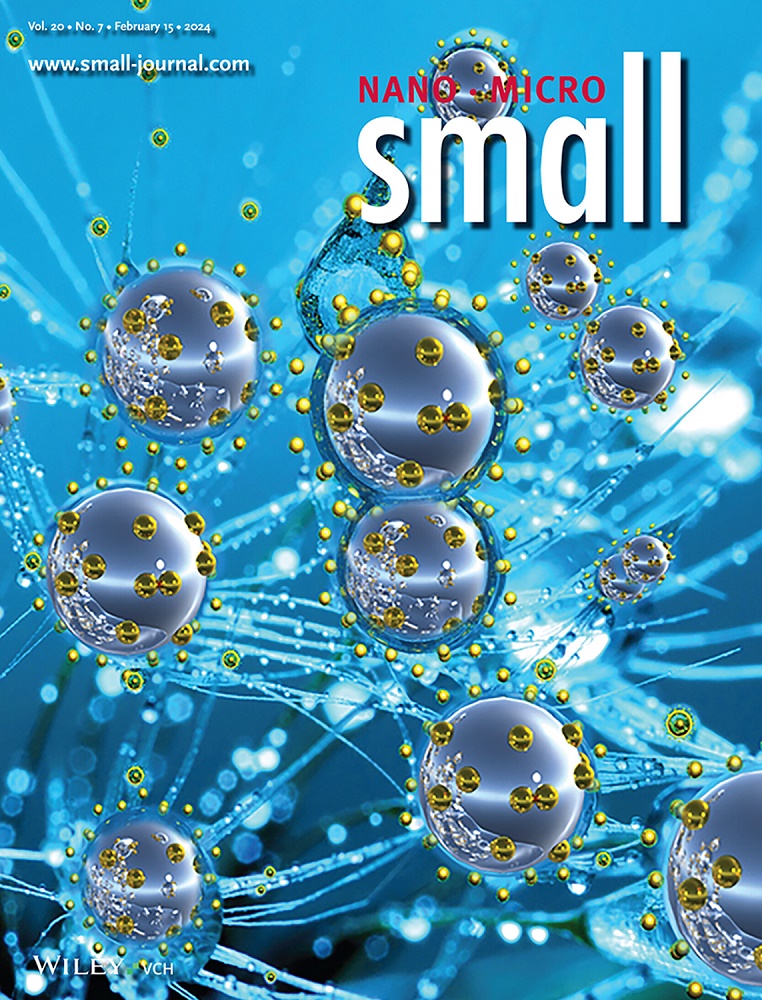面向神经形态计算应用的全光双向自供电突触器件的设计。
IF 12.1
2区 材料科学
Q1 CHEMISTRY, MULTIDISCIPLINARY
引用次数: 0
摘要
自供电光电突触器件因其超低能耗和自整流特性而受到广泛关注。然而,模拟其抑制行为的机制尚不清楚,这对试图实现光学抑制行为提出了挑战。本研究制备了具有自供电光增强和电抑制行为的甲脒碘化铅钙钛矿基突触器件。其抑制机理是室温下的缺陷诱捕和低温下的碘离子迁移。考虑到本文阐明的光增强行为和抑制机制,将二氢碘化乙二胺掺入钙钛矿层调节突触行为。令人印象深刻的是,这种添加剂导致自动力光增强向其抑制的转变。第一性原理计算表明,碘化物空位形成能的增加可能通过调节载流子陷阱和离子迁移行为来促进这种转变。此外,利用集成系统的光兴奋性和光抑制性突触行为来实现MINIST和CIFAR-10识别任务,识别率分别达到97.95%和77.36%。这项工作极大地促进了对模拟自供电光抑制突触行为的理解,并有助于全光双向自供电神经形态计算系统的发展。本文章由计算机程序翻译,如有差异,请以英文原文为准。
Design of All-Optical Bidirectional Self-Powered Synaptic Devices for Neuromorphic Computing Applications.
Self-powered optoelectronic synaptic devices have garnered significant attention due to their ultra-low energy consumption and self-rectification properties. However, the mechanism of mimicking their inhibitory behaviors remains unclear, presenting a challenge in attempting to realize optically inhibitory behaviors. This study fabricates formamidinium lead iodide perovskite-based synaptic devices that exhibit self-powered-optical potentiation and electrical inhibition behaviors. The mechanism underlying the inhibitory behaviors is argued to be the defect trap at room temperature and iodine ion migration at lower temperatures. Considering the optical potentiation behaviors and inhibitory mechanism clarified here, ethanediamine dihydroiodide is incorporated into the perovskite layer to regulate the synaptic behaviors. Impressively, this additive results in a shift of the self-powered-optical potentiation to its inhibition. First-principles calculations reveal that an increase of iodide vacancy formation energies facilitates this transformation by possibly modulating the carrier trap and ion migration behaviors. Additionally, the optically excitatory and optically inhibitory synaptic behaviors of the integrated systems with and without EDADI are exploited to implement MINIST and CIFAR-10 recognition tasks and achieve the high recognition rates of 97.95% and 77.36%, respectively. This work significantly advances the understanding of mimicking self-powered optically inhibitory synaptic behaviors and contributes to the development of all-optical bidirectional self-powered neuromorphic computing systems.
求助全文
通过发布文献求助,成功后即可免费获取论文全文。
去求助
来源期刊

Small
工程技术-材料科学:综合
CiteScore
17.70
自引率
3.80%
发文量
1830
审稿时长
2.1 months
期刊介绍:
Small serves as an exceptional platform for both experimental and theoretical studies in fundamental and applied interdisciplinary research at the nano- and microscale. The journal offers a compelling mix of peer-reviewed Research Articles, Reviews, Perspectives, and Comments.
With a remarkable 2022 Journal Impact Factor of 13.3 (Journal Citation Reports from Clarivate Analytics, 2023), Small remains among the top multidisciplinary journals, covering a wide range of topics at the interface of materials science, chemistry, physics, engineering, medicine, and biology.
Small's readership includes biochemists, biologists, biomedical scientists, chemists, engineers, information technologists, materials scientists, physicists, and theoreticians alike.
 求助内容:
求助内容: 应助结果提醒方式:
应助结果提醒方式:


